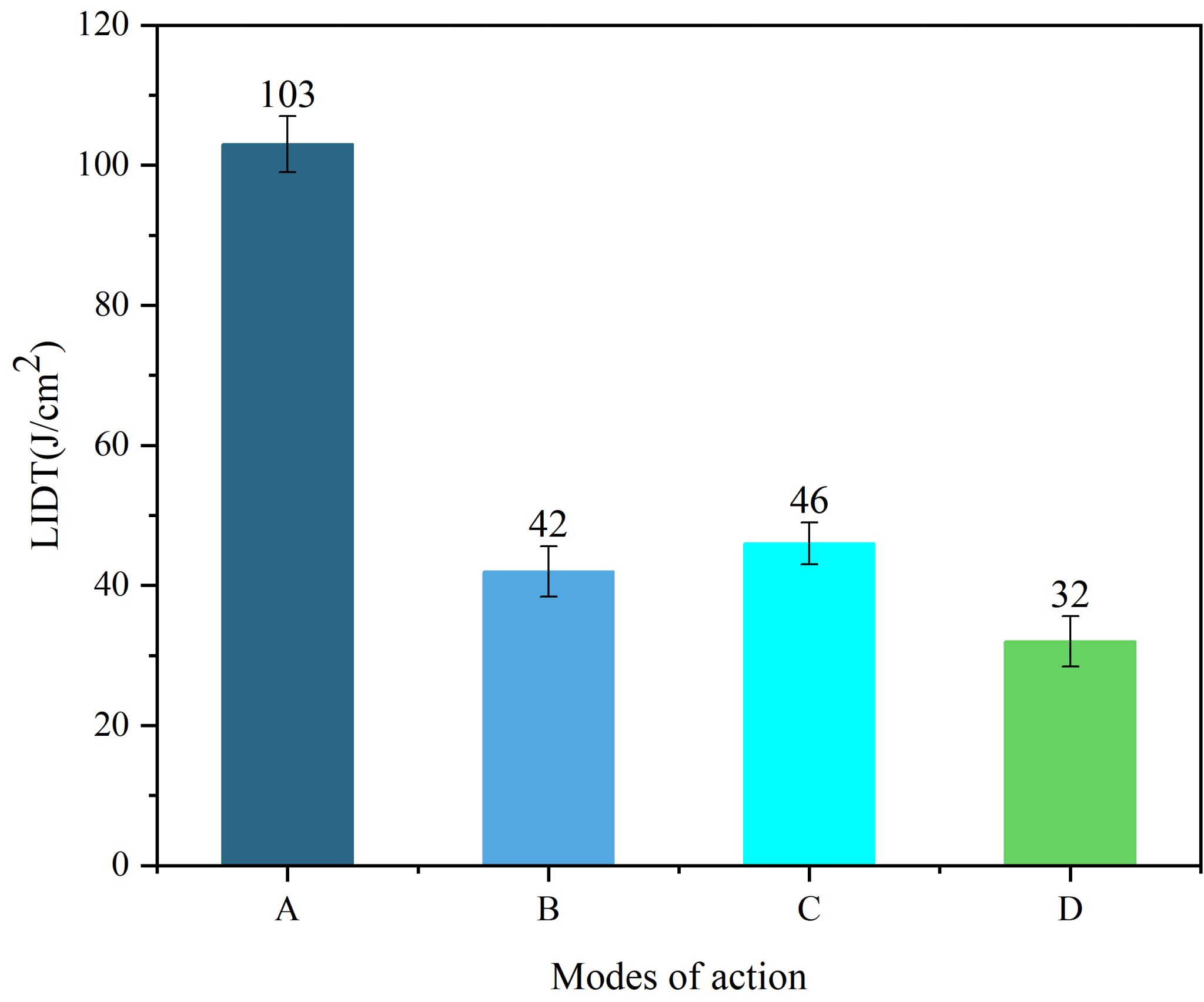Professor Ma Bin and colleagues from the Precision Optical Engineering Research Institute at Tongji University conducted near-earth space irradiation simulation experiments to investigate the mechanisms by which three space environmental factors, including proton irradiation, atomic oxygen irradiation, and space debris impact, individually and in combination, affect the laser damage thresholds and damage evolution patterns of HfO2/SiO2 tri-band high reflectance coatings and fused silica substrates. The research results preliminarily elucidate the degradation mechanisms of laser damage performance in transmissive components under near-Earth space conditions, providing support for the development of optical components with high damage thresholds resistant to space radiation.
In the near-earth space environment, the transmissive window components at the forefront of laser radar systems are directly exposed to external conditions, significantly impacting their performance stability and service life. For transmissive window components, any factors on the surface that can lead to laser damage may cause the component to undergo damage under subsequent high-energy pulsed laser exposure, leading to progressive degradation and ultimately resulting in system performance failure. Understanding the mechanisms by which the near-earth space environment affects transmissive components, identifying the causes of laser damage, and determining the patterns of service life degradation can guide the optimization of fabrication processes for radiation-resistant thin-film components and improvements in operational conditions for space applications.
Based on the aforementioned background analysis, Professor Ma Bin et al. conducted near-earth space irradiation simulation experiments to investigate the influence mechanisms of three space environmental factors, including proton irradiation, atomic oxygen irradiation, and space debris impact, on the laser damage thresholds and damage evolution patterns of HfO2/SiO2 tri-band high-reflectance coatings and fused silica substrates, both individually and in combination. For the high-reflectance coating samples, the damage thresholds decreased by 15.38%, 13.12%, and 46.80% following proton irradiation, atomic oxygen irradiation, and simulated space debris exposure (Penetration), respectively. The combined irradiation of the first two factors reduced the damage threshold by 26.93%, while the combined effects of all three factors resulted in a 63.19% reduction. This study clarifies the impact patterns of both individual and coupled space environmental factors on the damage thresholds.


(a) (b)
Fig. 1. (a)A comparison of LIDTs for high-reflection films under the action of single space environmental factors. (‘Without’ presents without any space environmental factors);(b) A comparison of LIDT values for simulated fragment compressions in high-reflectance films A: Protons & Atomic Oxygen; B: Protons & Penetration; C: Atomic Oxygen & Penetration; D: Protons & Atomic Oxygen & Penetration.
Develop high spatial resolution, in situ measurement techniques for laser damage and utilize in situ microscopy and photothermal absorption methods to characterize the micro-nano damage structures and photothermal absorption properties of transmissive components exposed to space irradiation.

Fig. 2. Surface morphology images of three-band high-reflectance thin films before and after proton and atomic oxygen irradiation. (a) Before proton irradiation; (b) After proton irradiation; (c) Before atomic oxygen irradiation; (d) After atomic oxygen irradiation

Fig. 3. SRIM simulations of proton concentrations and atomic oxygen distributions within the membrane layer. (a) Protons; (b) Atomic oxygen.
The research content and findings contribute to a deeper understanding of the causes and mechanisms of laser-induced damage in transmissive components for space applications, clarifying the impact of near-Earth space irradiation on the laser damage performance and service life of transmissive components. This work promotes advancements in the manufacturing of radiation-resistant transmissive components with high damage thresholds, supporting the rapid development of low-repetition-rate, high-power pulsed lasers and spaceborne laser radar systems in China.
https://www.researching.cn/Articles/OJ71a47ebe89aecfde
